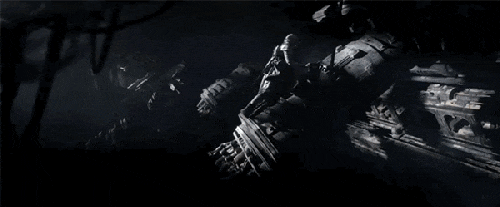Used-Future Aesthetic
- Matthew O'Regan

- Jun 11, 2018
- 2 min read
Before Star Wars, most science fiction films looked like this:
Science Fiction tended to present the future as utopian, and advanced technology as slick, stylish and beneficial to humanity. Science Fiction films made during the 1960s 'New Hollywood' era tended to reflect a level of optimism that is reflective of the time. The space race had been won with Neil Armstrong becoming the first human to set foot on the moon, civil rights battles where beginning to be won and many Americans viewed the future with great optimism and TV show like Star Trek, and films like 2001: A Space Odyssey (Kubrick, 1969) presented the future as full of wonder, whose exploration would ultimately benefit man-kind.
This all changed in the 1970s!
With the threat of Nuclear War, Vietnam, political turmoil (Watergate scandal) and social unrest characterising 1970s USA, the films of the time presented a dark, dangerous world that rejected the optimism and cultural changes brought about by the 1960s, replacing them with paranoia, fear, corruption and political intrigue. (see: Parallax View, The Conversation, Twilight's Last Gleaming). Many of the science fiction films of the decade reflected these cultural tensions and presented the future as an unknown, potentially dystopian world.
Science Fiction films usually operate on one of two fundamental principles:
1 - those that imagine a progression to a better, utopian society
2 - We are regressing in to a dystopian era
instead of presenting the future as a fantastical utopia human's were working towards, many science-fiction films of the 1970s presented the future as a dangerous and suspicious place through a 'used-future' aesthetic.
Characteristics of 'used-future':
- Vehicles that are damaged and look used
- Locations that are lived-in; they look like they have been part of the world for a long time before our characters inhabited them
- Dystopian environments
- Low Key lighting
- 'Real' sound effects - space ships, weapons etc. sound like they are based in our reality, not fantastical
The used-future aims to present the future as a reality that is extrapolated from our won, not a fantastical, utopian idea of the future we want.
In Charles Champlin’s coffee-table biography of George Lucas, he notes “… Lucas’s emphasis on the idea of a used future, a future that was meant to be experienced as reality rather than fantasy. The Star Wars future was not showroom shiny but dented and rusty, as if it hd hard use on the back roads on innumerable galaxies. Lucas told an interviewer during production in England that the Apollo casules may have looked brand new when they soared away, but it was clear when they returned that the interior was littered with candy wrappers, empty Tang cans, and other trash, just like the family station wagon.”
Notable examples:
THX-1138 ( G. Lucas, 1972)
District 9
Star Wars (G.Lucas, I. Kershner, R. Marquand)
Blade Runner (Scott. 1982



















Comments